| Name (Latin) | Description | Location | Time of construction | Size | Bild |
|---|
| Aggar | Inland fortress in southern Africa Proconsularis | Sidi Amara | no data available | 0,05 ha |  |
| Ammaedara | Border fortress in the far west of the Byzacena | Haïdra | between 534 and 565 [6] | 2,55 ha |  |
| Capsa | Border fortress in southern Byzacena | Gafsa | no data available | k. A. | 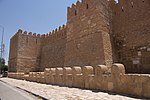 |
| Chusira | Inland fortress | La Kesra | arguably between 534 and 565, more likely before 544 [7] | 0,28 ha | 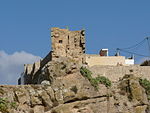 |
| Civitas Vazitana Sarra | Inland fortress in Africa Proconsularis | Henchir-Bez | no data available [8] | 0,06 ha |  |
| Clupea | Inland fortress protecting the namesake city, modified in Ottoman times | Kelibia | no data available | k. A. |  |
| Cuicul | Inland fortress protecting the namesake city in Mauretania Sitifensis | Djémila | no data available [9] | 0,03 ha | 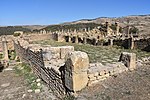 |
| Gadiaufala | Inland fortress in Numidia | Ksar Sbahi | between 539 and 544 [10] | 0,16 ha | https://www.leguidetouristique.com/ruinesbr/fort-byzantine-gadiovala-ksar-al-sobihi |
| Iunci | Inland fortress on the coast of the Byzacena | (Younga) near Sfax | during the tenure of Justin II. (566–578) [11] | no data available |  |
| Lamasba | Inland/border fortress in the Belezma range often called Ksar Belezma | Mérouana | between 536 and 544 [12] | 1,4 ha |  |
| Lambaesis | Inland/border fortress south of the Belezma range | Tazoult-Lambèse | no data available [13] | no data available |  |
| Leptis Magna | Fortified coastal city in Tripolitania | Leptis Magna | arguably between 533 and 565 [14] | 28 ha |  |
| Limisa | Inland fortress in the north of the Byzacena | Ksar Lemsa | arguably between 585 and 600 [15] | 0,09 ha |  |
| Mactaris | Inland fortress in Africa Proconsularis | Maktar | no data available [16] | 0,35 ha |  |
| Madauros | Inland fortress close to the coast in Mauretania Sitifensis | Madauros | between 534 and 544 [17] | 0,24 ha |  |
| Musti | Inland fortress in Africa Proconsularis | Mustis | no data available [18] | 0,2 ha | 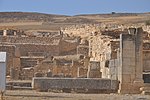 |
| ? | Inland fortress | Ksar El Hadid | no data available | no data available |  |
| Oea | Fortified coastal city in Tripolitania | Tripolis | presumably by Phonicians in the 7th century b.C. | no data available |  |
| Sabratha | Fortified coastal city in Tripolitania | Sabrata | arguably between 533 and 565 [19] | 9,0 ha |  |
| Sicca Veneria | Inland fortress to protect the city | El Kef | arguably between 533 and 565 [20] | no data available | 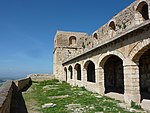 |
| Sitifis | Inland fortress to protect the city | Sétif | between 539 and 544 [21] | 1,69 ha |  |
| Suas | Inland fortress in Africa Proconsularis | Chaouach | no data available | no data available. |  |
| Sufetula | Inland fortress in the far southwest of the Byzacena | Sbeitla | no data available | no data available |  |
| Thamugadi | Inland/border fortress in Numidia | Timgad | 539/540 [22] | 0,75 ha | 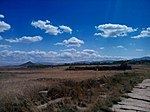 |
| Thagura | Inland fortress in Numidien | close to Souq Ahras | 539/or 548 („before the death of Theodora“) [23] | 0,53 ha | https://www.leguidetouristique.com/ruinesbr/thagura-taoura |
| Theveste | Fortified town in eastern Numidia | Tebessa | between 536 and 544 [24] | 7,5 ha |  |
| Thignica | Inland fortress in Africa Proconsularis | Ain Tounga | arguably before the death of Justinian I. 565 [25] | 0,28 ha | 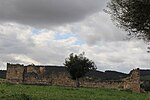 |
| Tipasa | Basilika an der Küste von Mauretania Prima | Tipasa | no data available | no data available | 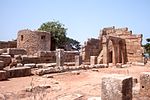 |
| Tipasa | Inland fortress, possibly city fortifications in Numidien | Tifech | presumably before 553 [26] | 2,25 ha [27] | https://harba-dz.com/annuaire-algerie/41-wilaya-de-souk-ahras/site-de-tiffeche-tipaza-de-numidie/ |
| Tubunae | Border fortress in Mauretania Sitifensis | Tobna | in the 6.th century, no details [28] | 0,50 ha | https://www.leguidetouristique.com/ruinesbr/tobna |
| Tubernuc | Structure of unknown purpose in Africa Proconsularis | close to Grombalia | no data available | no data available |  |
| Vaga | inland fortress in Numidia | Béja | before the death of Empress Theodora in 548 [29] | no data available |  |
| Vescera? | Possible border fortress in Numidien | Biskra | no data available | no data available |  |
| Zabi | Possible border fortress in Mauretania Sitifensis [30] | M'Sila, Ortsteil Bechilga | no data available | no data available | |
| Zaga? | Potential inland fortress in Africa Proconsularis [31] | Ksar Zaga | no data available | no data available |  |
| Zucchara | Inland fortress in southern Africa Proconsularis | Ain-Djoukar | no data available | no data available |  |
































